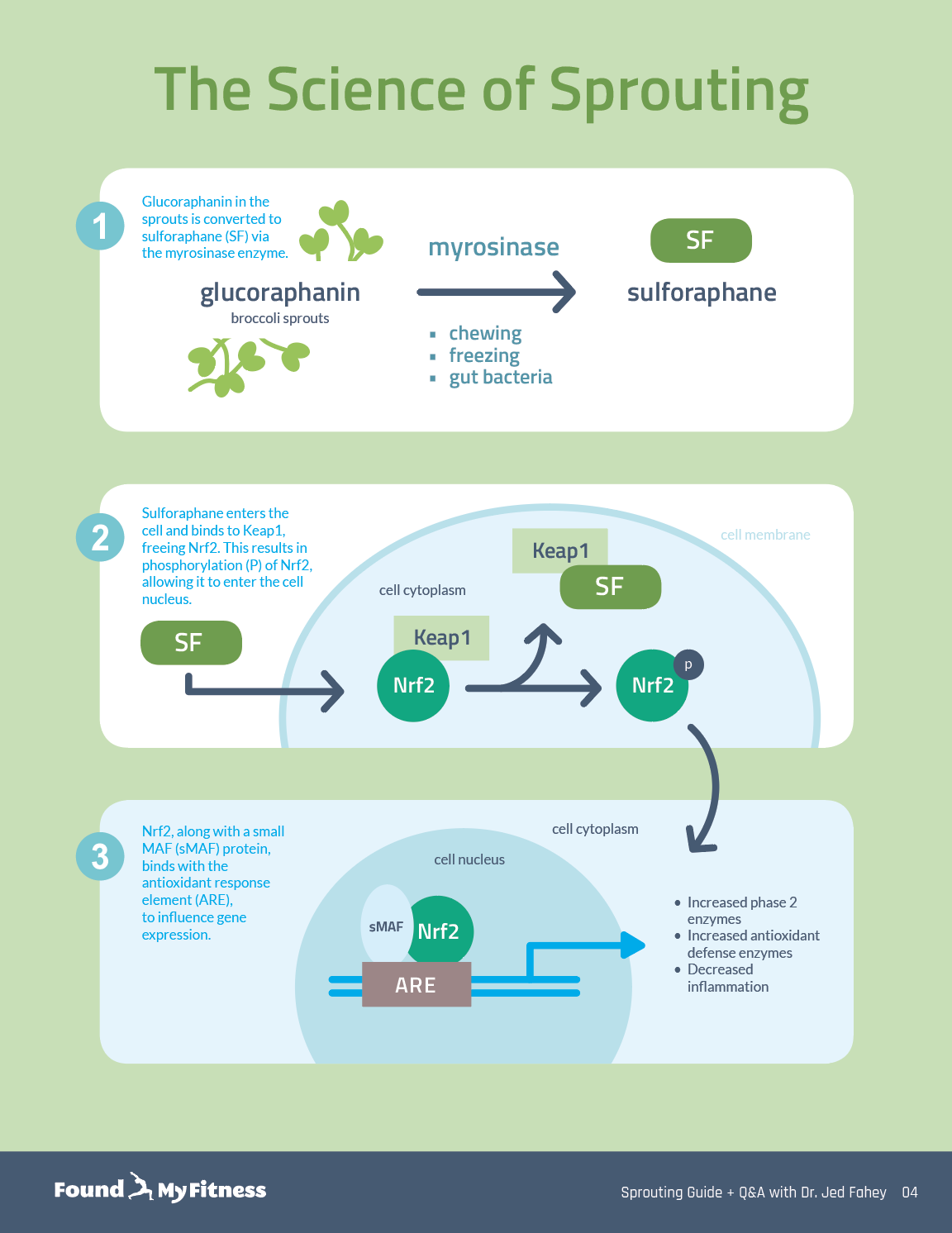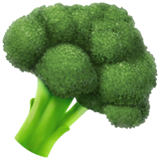Is sulforaphane present in all cruciferous vegetables? | Jed Fahey
Enter your email to get our 15-page guide to sprouting broccoli and learn about the science of chemoprotective compount sulforaphane.
Broccoli sprouts are concentrated sources of sulforaphane, a type of isothiocyanate. Damaging broccoli sprouts – when chewing, chopping, or freezing – triggers an enzymatic reaction in the tiny plants that produces sulforaphane.

Get the full length version of this episode as a podcast.
This episode will make a great companion for a long drive.
Sulforaphane is a type of isothiocyanate compound. Isothiocyanates are derived from a wide variety of cruciferous vegetables and moringa, a tropical plant. Very few of these plants contain glucoraphanin, however, the necessary precursor to sulforaphane. The highest quantities of glucoraphanin are found in broccoli, especially broccoli sprouts. Related vegetables, like broccoli rabe, cauliflower, and others have negligible amounts. In this clip, Dr. Jed Fahey enumerates the vegetables in which sulforaphane is found.
- [Dr. Fahey]: I saw a question a couple days ago on the site from Lucy and she said something to the effect of, "Does broccoli rabe contain sulforaphane?" And, Lucy, that's a great question, if you're there today.
And the answer is no, it doesn't. And broccoli rabe is actually related to broccoli, but interestingly it's not as closely related even as cauliflower or cabbage are to broccoli. And broccoli rabe does not have a significant amount of glucoraphanin or sulforaphane. But this is an opportunity for me to stamp my foot down and say, look, a lot of people, in the lay public especially, are under the impression that all cruciferous vegetables have sulforaphane or glucoraphanin. They do not.
So if you eat any cruciferous vegetables, you're getting isothiocyanates. Which are all closely related to each other, they're all closely related to sulforaphane. But, for example, cabbage has essentially none. It's got other isothiocyanates that are good for you, many of them. Cauliflower has essentially none. Kale doesn't have glucoraphanin to any great extent. Except, as I recall, there's one variety, red Russian kale, that does have a substantial amount.
So be careful thinking that all... Well, all cruciferous vegetables are good for you, I think that's fair to say. But be careful assuming that all cruciferous vegetables contain sulforaphane because they don't.
A glucosinolate (see definition) found in certain cruciferous vegetables, including broccoli, Brussels sprouts, and mustard. Glucoraphanin is hydrolyzed by the enzyme myrosinase to produce sulforaphane, an isothiocyanate compound that has many beneficial health effects in humans.
An essential mineral present in many foods. Iron participates in many physiological functions and is a critical component of hemoglobin. Iron deficiency can cause anemia, fatigue, shortness of breath, and heart arrhythmias.
Byproduct of a reaction between two compounds (glucosinolates and myrosinase) that are found in cruciferous vegetables. Isothiocyanates inhibit phase I biotransformation enzymes, a class of enzymes that transform procarcinogens into their active carcinogenic state. Isothiocyanates activate phase II detoxification enzymes, a class of enzymes that play a protective role against DNA damage caused by reactive oxygen species and carcinogens. Examples of phase II enzymes include UDP-glucuronosyltransferases, sulfotransferases, N-acetyltransferases, glutathione S-transferases, and methyltransferases.
An isothiocyanate compound derived from cruciferous vegetables such as broccoli, cauliflower, and mustard. Sulforaphane is produced when the plant is damaged when attacked by insects or eaten by humans. It activates cytoprotective mechanisms within cells in a hormetic-type response. Sulforaphane has demonstrated beneficial effects against several chronic health conditions, including autism, cancer, cardiovascular disease, diabetes, and others.
Get email updates with the latest curated healthspan research
Support our work

Every other week premium members receive a special edition newsletter that summarizes all of the latest healthspan research.
Sulforaphane News
- Broccoli seed extract with a sulforaphane precursor reduced common cold symptom days in healthy adults.
- Sulforaphane-rich broccoli sprout extract modestly lowers fasting blood sugar in some people with prediabetes, perhaps due to variations in gut microbiota and individual metabolic traits.
- Sulforaphane, derived from broccoli, activates Nrf2, mitigating age-related skin changes and boosting the antioxidant defense system in mice.
- Sulforaphane from broccoli sprouts shows promise in preventing Alzheimer's disease – boosting memory and enhancing mitochondrial function in mice.
- Breathwork enhances endogenous antioxidant enzyme activity to counter oxidative stress.






